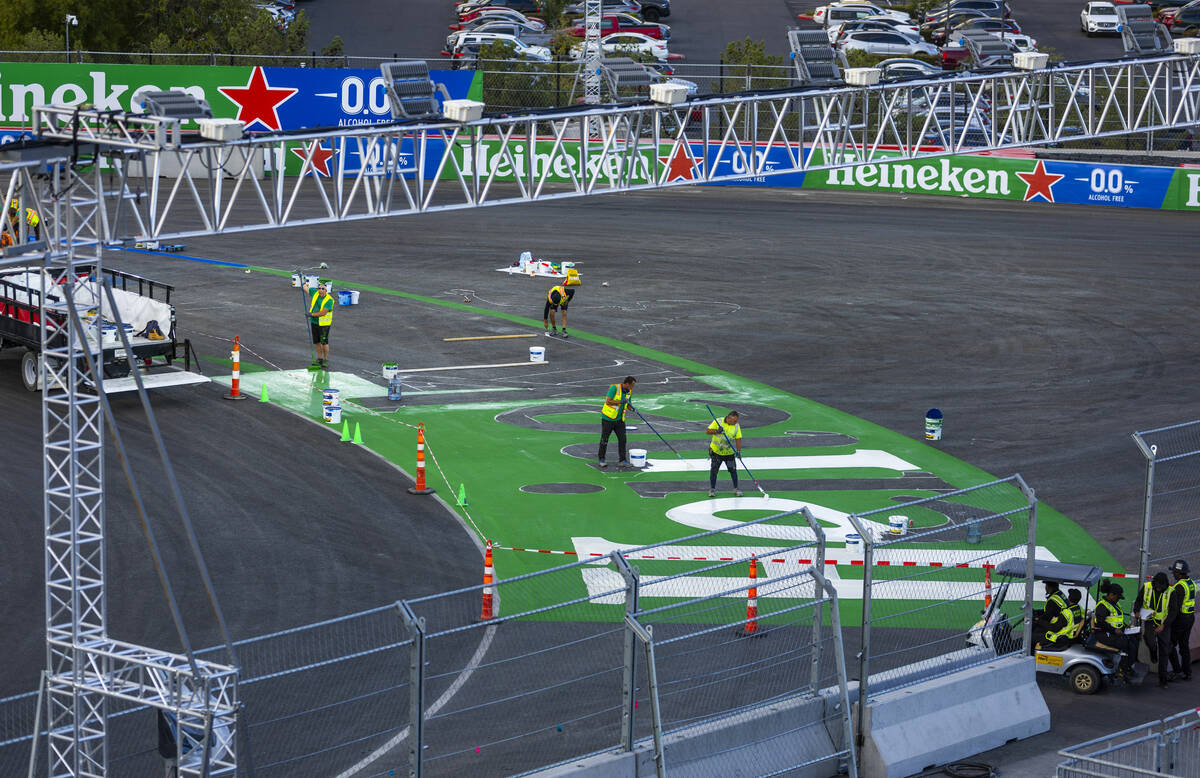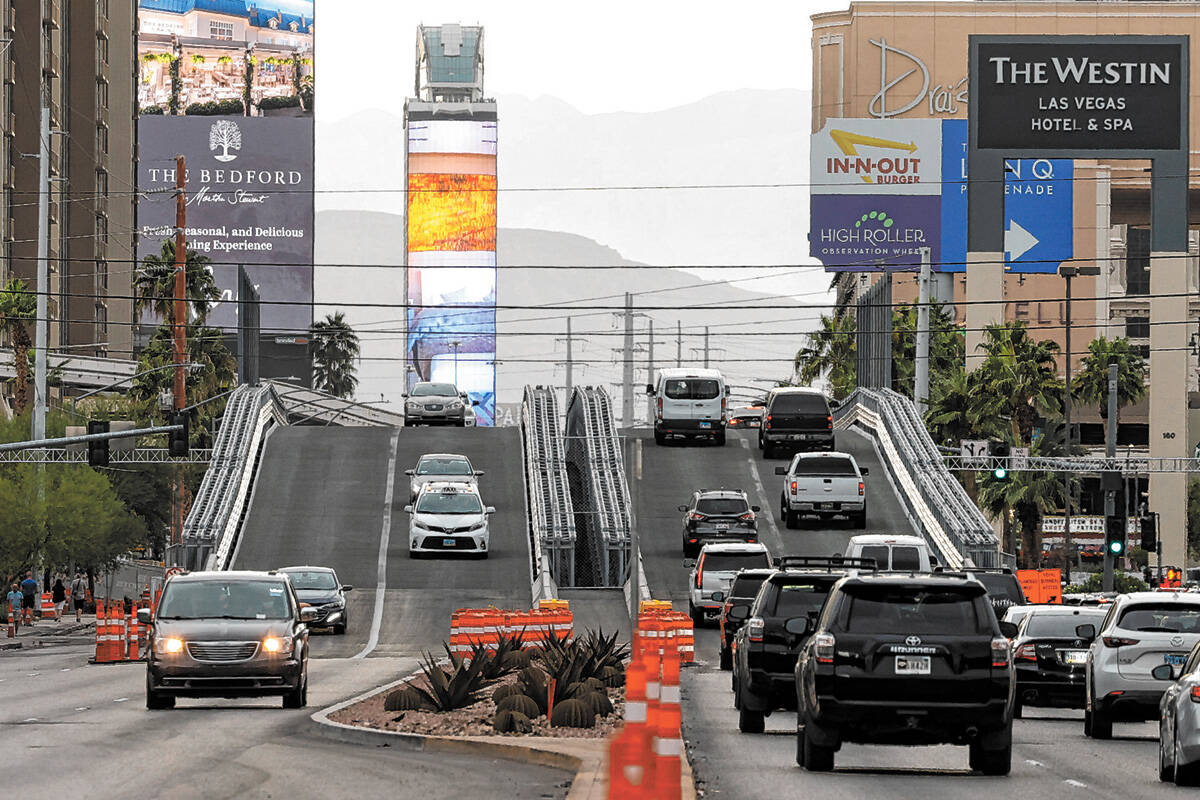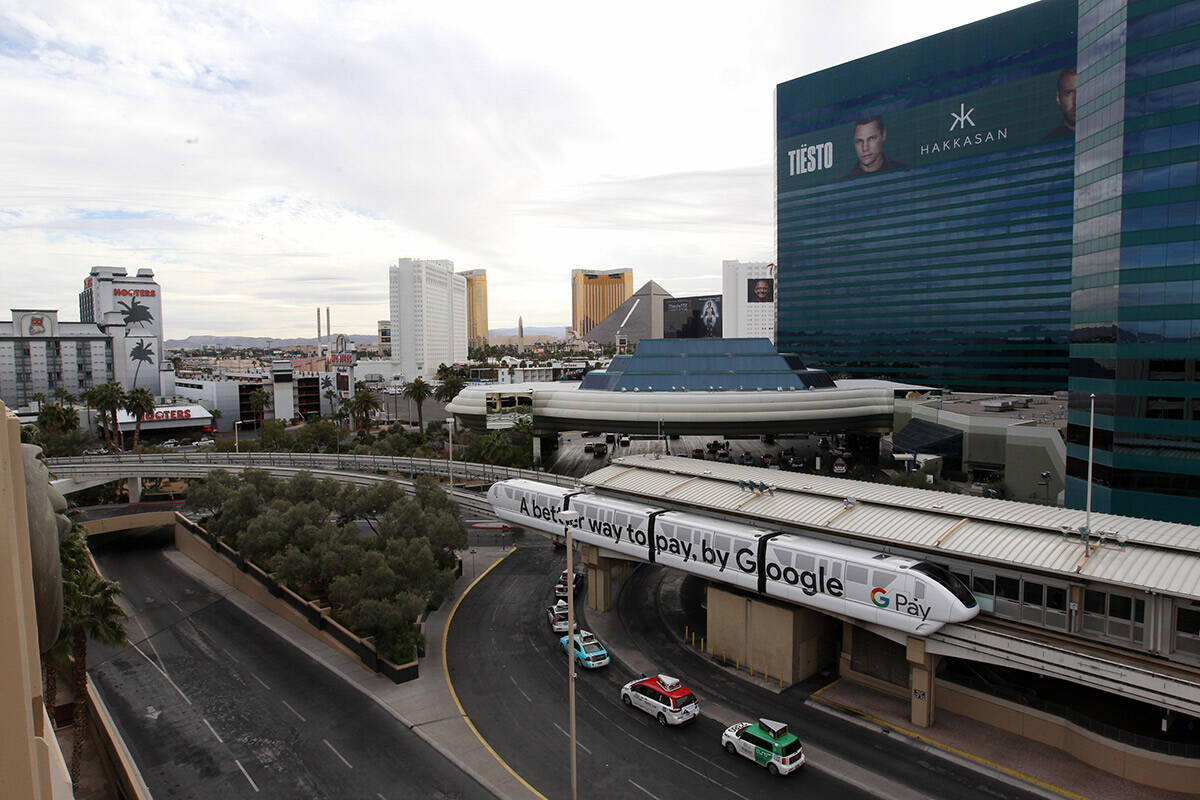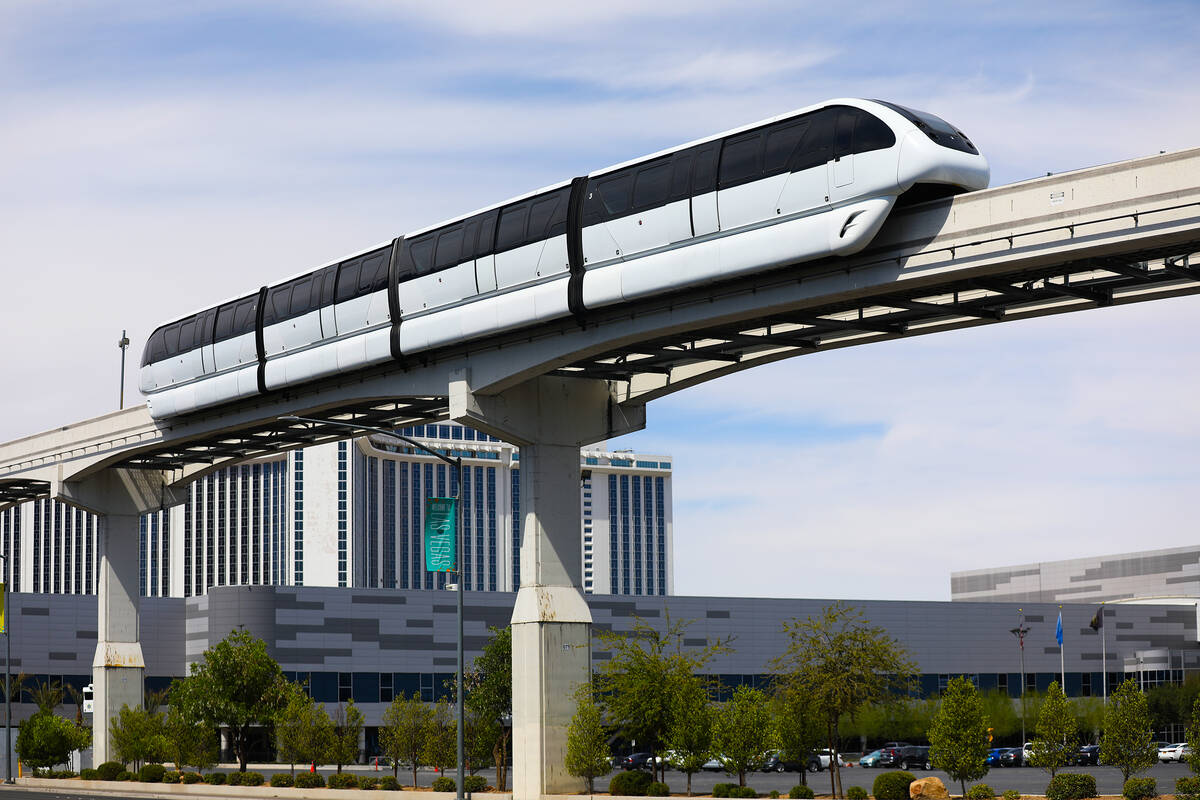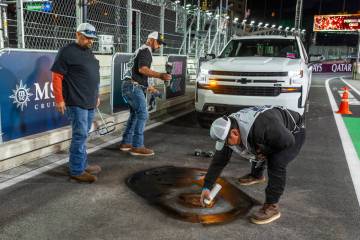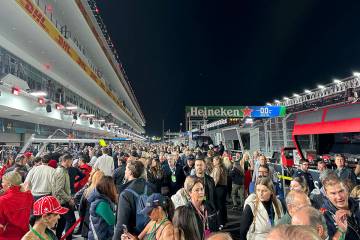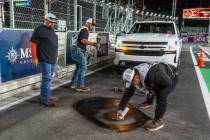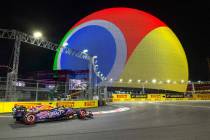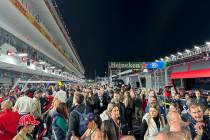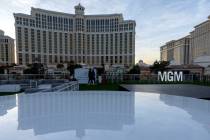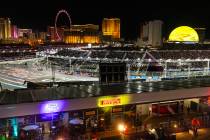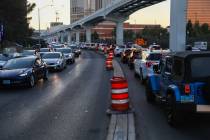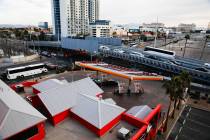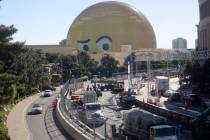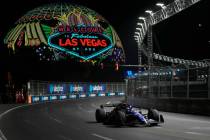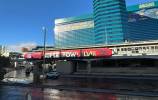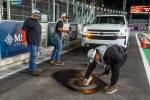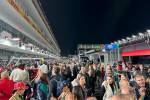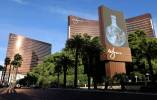Grand Prix mobility plan for Strip employees hits a rough stretch
With the Las Vegas Grand Prix just a week away, Clark County Commissioner Marilyn Kirkpatrick raised questions about mobility, mainly involving how to move around thousands of Strip hotel workers essential to the weekend’s success.
Race weekend takes place Nov. 16-18 on a 3.8-mile circuit that includes public roads consisting of Las Vegas Boulevard, Koval Lane and Harmon and Sands avenues. With the large amount of public right-of-way, the traffic plan has been worked on heavily over the past several months.
Despite that work, Kirkpatrick aired questions in relation to the Las Vegas Monorail’s usage, contingency plans for track setup and teardown, and general traffic concerns surround the race. Other commissioners also weighed in with questions.
Brian Yost, Las Vegas Convention and Visitors Authority chief operating officer, Tuesday told the Clark County Commission that it’s no question that the potentially most lucrative weekend in Las Vegas’ history is reliant upon area hospitality workers. He said the authority has been working with race officials and resort leaders to create the best possible transportation plan, with the disruptive restrictions in mind.
Monorail to play important role
A big piece to moving workers employed at properties within the race’s footprint is a park-and-ride system. Resort employees can park at the Las Vegas Convention Center and either take the Las Vegas Monorail or arrive via chartered buses.
Monorail tickets will be provided free to the workers. About 19,000 monorail tickets are allotted for workers, which accounts for two tickets per employee, per day.
“It’s quite a healthy number of monorail tickets that will be distributed, again both for employees as well as vendors and tenants in the various properties,” Yost said.
Employees at Venetian and Palazzo properties account for 10,000 of the monorail tickets, with Caesars properties allotted 6,000 tickets and race staff accounting for 2,000 tickets.
The monorail’s capacity is about 3,000 passengers per hour on the entire 3.9-mile system running from the Sahara to the north and to the MGM Grand to the south, Yost said. The system will be open 24 hours per day starting at 7 a.m. Tuesday and running through 3 a.m. Nov. 20. Three to eight trains will be in operation depending on time of day.
The expected wait time at the Las Vegas Convention Center station where Strip employees can park and ride is expected to be between 5-11 minutes, Yost said.
Kirkpatrick questioned what happens when capacity is reached on the monorail or if a train breaks down during race weekend.
“There are a number of buses that are stationed at Las Vegas Convention Center that are designed to absorb that demand that cannot be on the monorail for whatever reason,” Yost responded. “Those buses will have designated routes. … There have been pickup and dropoff points identified within the circuit that will accommodate all of these properties.”
About 4,600 parking spaces at the convention center will be available for workers to park before hopping on a bus or the monorail. Those spots were divided up among resorts and properties in the race’s footprint after discussions with all involved.
Caesars employees account for 2,240 of the spaces, Venetian and Palazzo have 2,006 spaces, with other properties requesting no more than 400 spots per day. Grand Prix workers will not park at the convention center.
The shuttle bus system will operate on varying hours each day beginning Tuesday. Race days, Nov. 16-18, the bus system will be in operation between 3 p.m. and 4 a.m. daily. Dedicated routes are located within the race’s footprint for the buses to access the properties.
Those who work at Caesars properties will have the ability to park at the Rio and take a shuttle into the area via Twain Avenue into Frank Sinatra Drive, which runs north and south west of the Strip. The short trip from Rio is estimated to take about 20-25 minutes when traffic is high surrounding the race.
Strip resort workers and race vendors at MGM Resort International and Caesars Entertainment properties can still park at their place of employment in their personal vehicles. With the road restrictions around the area, driving personal vehicles into work probably will take much longer than on a normal day.
Las Vegas Grand Prix CEO Renee Wilm on Wednesday told the Review-Journal that signing up for race-related text alerts is one of the best ways to stay in the loop on the latest road conditions.
The text alerts “will give real time traffic information and updates,” Wilm said.
Workers and vendors should “also make sure that they’re following the communications that are being pushed out by each of the property owners because they will be messaging to their employees the applicable ways employees can get inside of the circuit during race weekend.”
Helpful app
Wilm also recommends that residents and visitors download the Las Vegas Grand Prix smartphone application. The app has a way-finding feature that will guide fans through their spectator zone and also features traffic updates.
Throughout the resort corridor and neighbors roads, there will be hundreds of flaggers, law enforcement and other officials helping direct traffic.
“To ensure that critical arteries like Frank Sinatra are kept as open as possible,” Yost said. “Because it provides the main feeder into many of those west side properties.”
Race officials consider the Las Vegas Grand Prix to be the first walking circuit on F1’s calendar and urge that people dress appropriately for comfort and to only bring essential items.
“This is the first walking circuit of Formula One, and we are encouraging everyone to hit the streets with their trainers (sneakers),” Wilm said.
As is the case at many other large events in Las Vegas, a clear bag policy will be in place.
Each night, public roads that are part of the race’s track will start to close at 5 p.m., with full closure planned to occur by 7 p.m. Crews will have roads reopened to general traffic by 2 a.m., Terry Miller of Miller Project Management, which is leading the race’s infrastructure work, said during Tuesday’s meeting.
F1’s sanctioning body, the FIA, requires that during closure time to conduct a nightly safety check and cleaning of the road ahead of drivers entering the track, Miller said.
“Because when we turn it over to them, it was a public road just an hour before,” Miller said. “So there’s a lot of work that they do in the two hours before the race even actually happens.”
Have to ‘make it work’
Kirkpatrick also expressed concern if there were a scenario that would see crews move away from their planned schedules of closing and reopening roads after each night’s events. Her worry derives from the different shifts hotel workers have over the course of a day.
“So people are going to have to leave earlier than normal, and people are going to have to leave later than expected, which is similar to what we do on New Year’s Eve,” Kirkpatrick said. “It’s here now, and we’ve got to suck it up and make it work, but I am going to be 100 percent be calling somebody to make sure that we’re paying attention to what constituents need.”
Miller answered by reminding Kirkpatrick she has his cellphone number and she’s welcome to call him with any concerns. He also noted that race officials are ready for just about anything come race week.
“F1 itself does this around the world, and they have to go through all of the potential scenarios,” Miller said. “To suggest that we have one or two hours of float time would be incorrect. But we do have the flexibility to move and respond in terms of delays of the race or god forbid anything that keeps the race from continuing on, we’re ready to manage that.”
Contact Mick Akers at makers@reviewjournal.com or 702-387-2920. Follow @mickakers on X.



